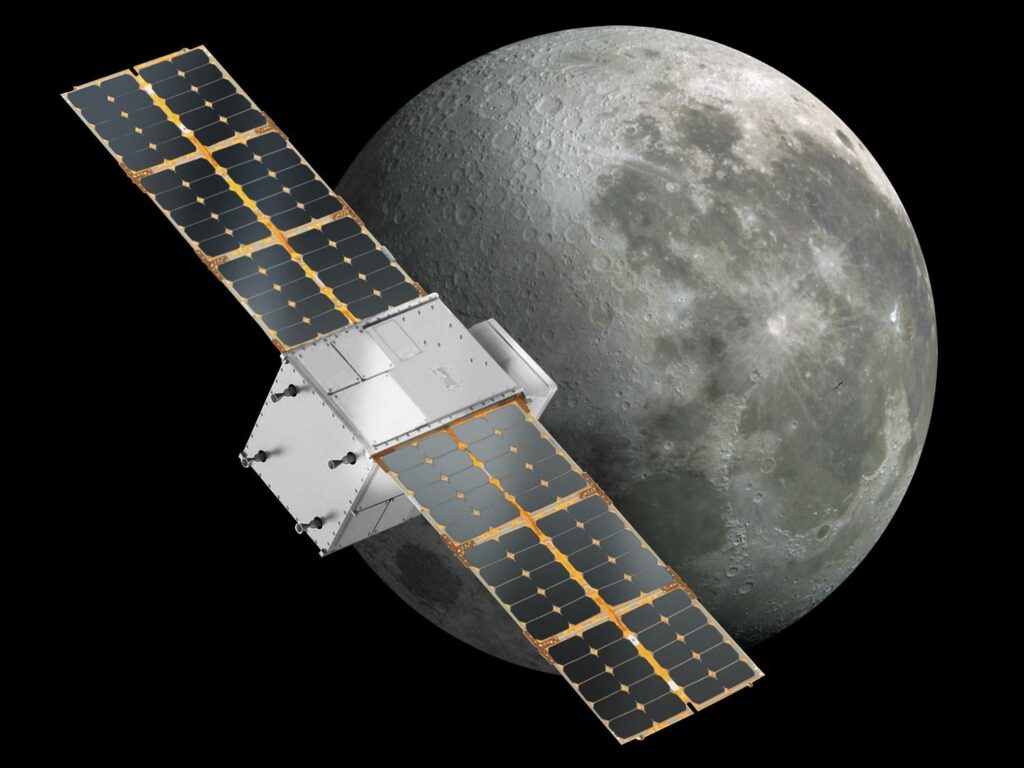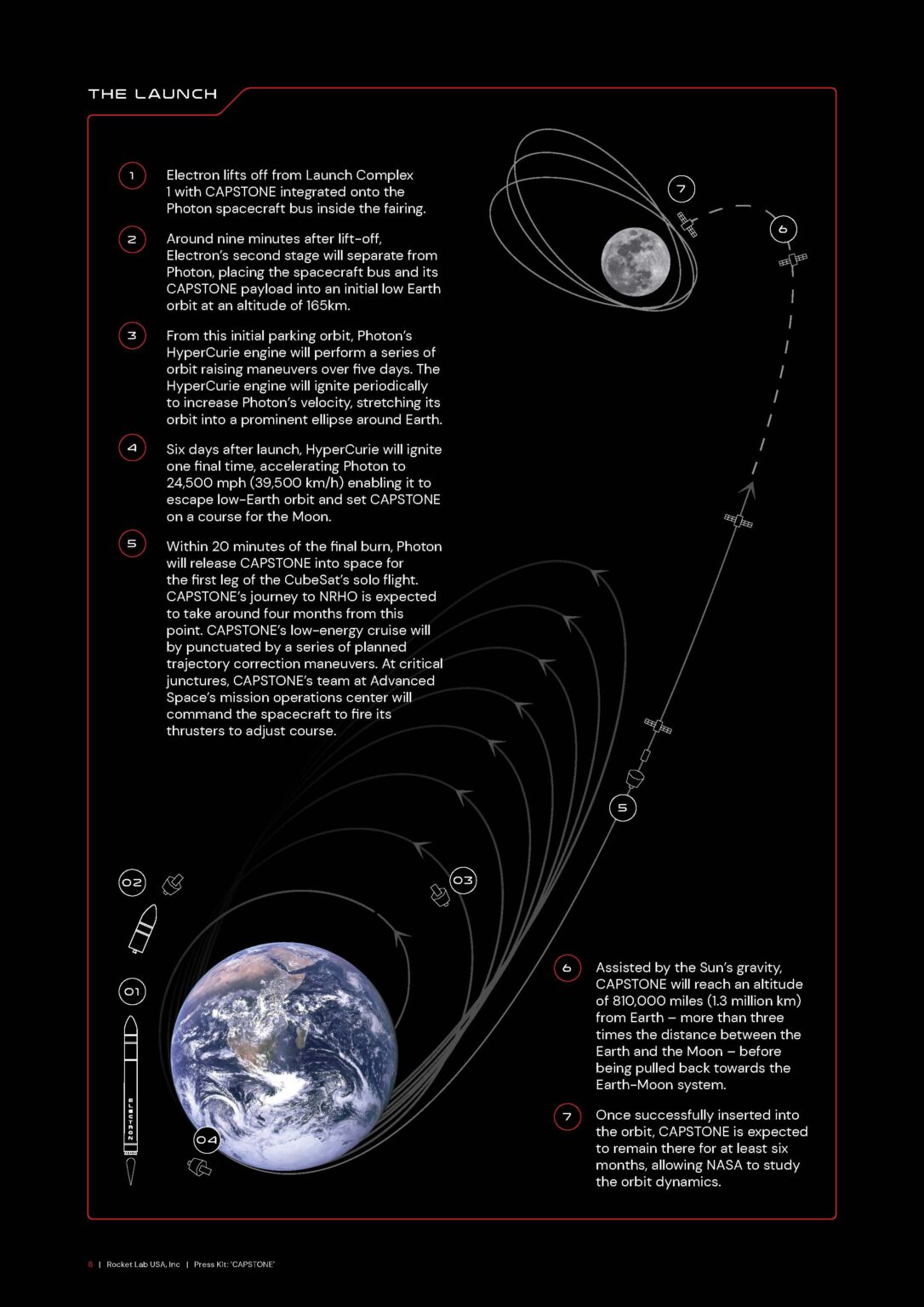Rocket Lab has successfully launched an Electron rocket with a NASA-owned CAPSTONE (Cislunar Autonomous Positioning System Technology Operations and Navigation Experiment) satellite. In the coming days, the spacecraft will have to perform a series of maneuvers that will send it to the Moon.
Liftoff! #CAPSTONE launched aboard a @RocketLab Electron rocket to pave the way for future @NASAArtemis missions to the Moon and beyond.
What’s next for the microwave oven-sized satellite? Check out https://t.co/dMVnvEQcfC for updates. pic.twitter.com/VVoAOjSYbD
— NASA (@NASA) June 28, 2022
Technical structure and mission objectives
The CAPSTONE satellite is built on the basis of the CubeSat (12U) platform, its mass is 25 kg. The main task of the device is to check an almost rectilinear halo Orbit (Near-Rectilinear Halo Orbit, NRHO) centered around the L2 Lagrange point of the Earth-Moon system. It was chosen by NASA and ESA to host the Gateway lunar orbital station. During its mission, the satellite will have to test the long-term stability of this orbit in practice. CAPSTONE also has a second task in the form of testing an autonomous navigation system.

The satellite will be delivered to the Moon using the Photon universal platform built by Rocket Lab. It is worth noting that CAPSTONE was the first interplanetary cargo for the company. The Electron rocket also entered itself into the cosmonautics reference books as the smallest carrier in history used to launch the spacecraft to the Moon.
CAPSTONE Flight Plan
Currently, a bundle of Photon and CAPSTONE is in near-Earth orbit. In the next five days, they will have to perform a series of course corrections, during which they will gradually increase their apogee. On the sixth day after the launch, a maneuver will take place that will direct the bundle to the Moon. 20 minutes after its completion, CAPSTONE will separate from Photon, after which they will continue the flight in independent mode.

In the next four months, CAPSTONE will perform a series of corrections that will allow it to move into the NRHO orbit. This event is scheduled for November 13. It is expected that the device will work in the NRHO orbit for at least six months.
As for Photon, after the separation of CAPSTONE, the platform will make a close flyby of the Moon. Rocket Lab hopes to use these events for additional testing of its control system. In addition, presumably a camera is installed on board the platform, which will take a number of pictures of the moon of our planet.
Earlier we wrote about the preparations for the launch of NASA’s solar sail.
Follow us on Twitter to get the most interesting space news in time
https://twitter.com/ust_magazine
